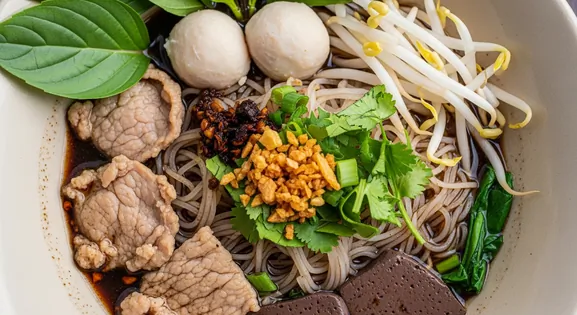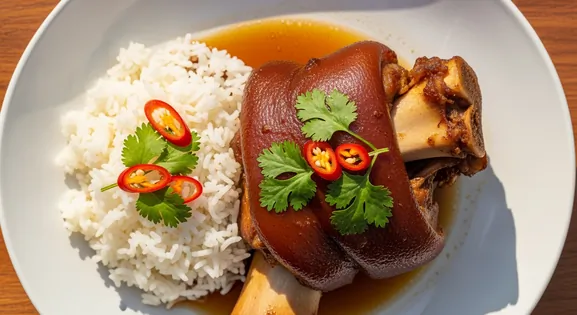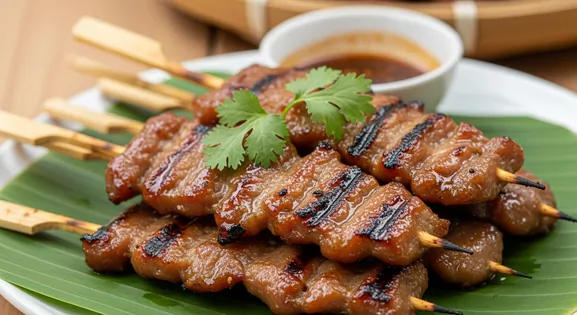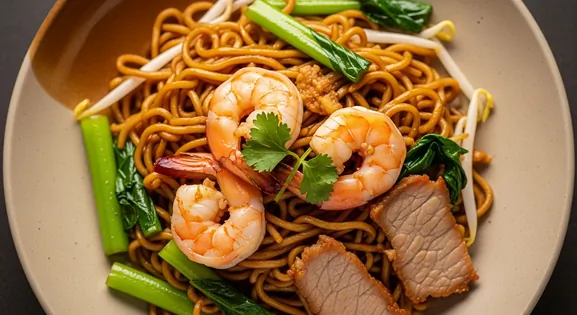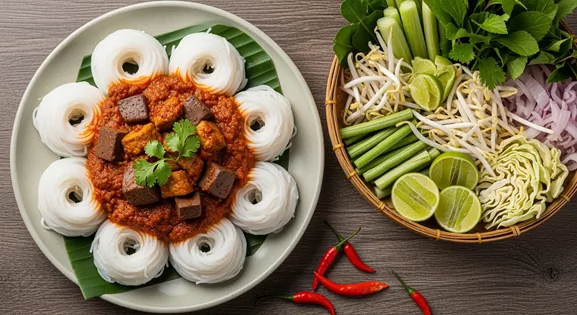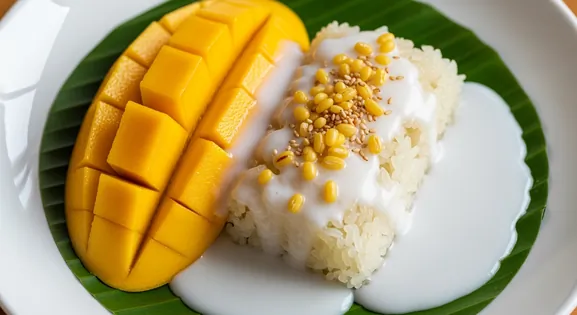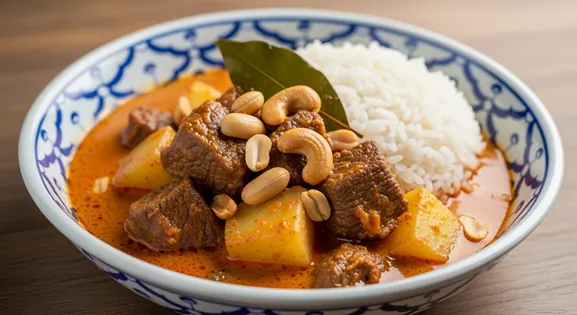Fried Soft Shell Crab in Thailand: A Complete Food Lover's Guide
ปูนิ่มทอด (Poo Nim Tod)
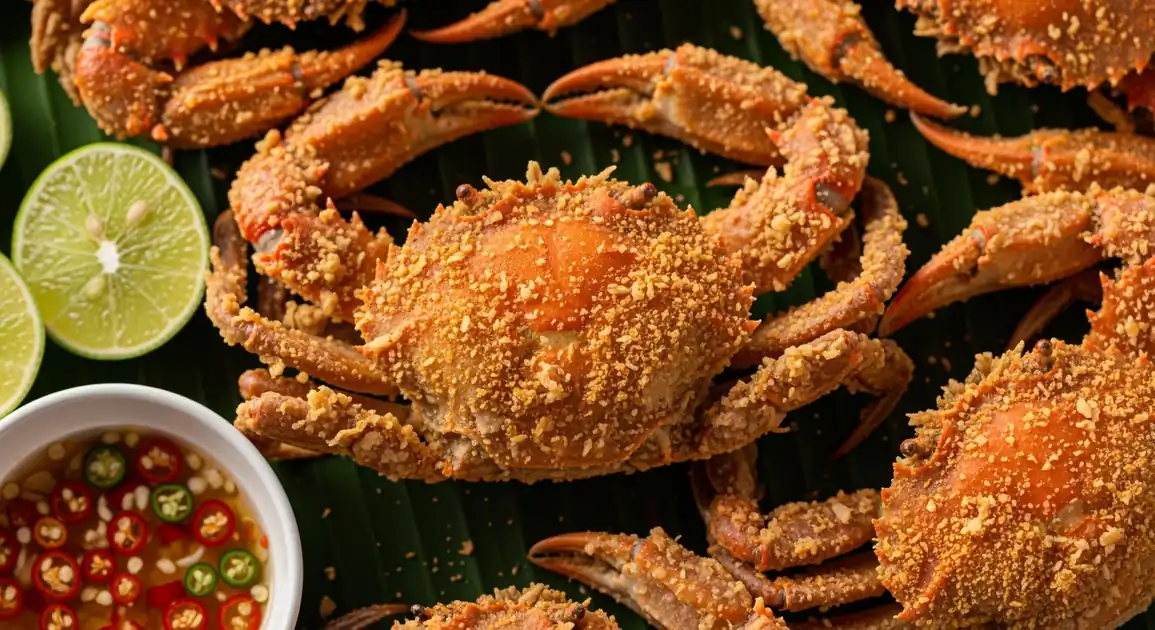
A Culinary Snapshot
Poo Nim Tod (fried soft shell crab) is a treasured Thai seafood delicacy featuring whole molted crabs coated in a light, seasoned batter and deep-fried to golden perfection. Prized for its satisfying contrast between crispy exterior and tender, sweet crabmeat inside, this dish showcases Thailand's expertise in fresh seafood preparation. Typically served with tangy seafood dipping sauce (Nam Jim Seafood), lime wedges, and often a side of steamed rice or green mango salad.
How It Is Traditionally Made
The process begins with selecting fresh soft shell crabs, typically blue swimming crabs or mud crabs harvested immediately after molting. The crabs are cleaned by removing the gills and sometimes the face (eyes and mouth parts). They're then marinated briefly in a mixture that might include garlic, white pepper, fish sauce, and sometimes curry powder. The crabs are dredged in a seasoned flour mixture or light batter, then deep-fried in very hot oil (around 180°C/350°F) for 2-3 minutes until golden brown and crispy. This high-temperature frying is crucial for food safety and achieves the characteristic texture contrast.
Key Ingredients of Fried Soft Shell Crab
Soft Shell Crabs
These are the star of the dish, specifically mud crabs or blue swimming crabs harvested immediately after molting. Their shells are still soft and edible, allowing the entire crab to be deep-fried to a crispy, tender delight.
Quality indicator: Look for crabs that are intact, have a mild, fresh ocean scent, and are stored on ice or alive in clean tanks before cooking.
Seasoned Batter/Flour
A light coating, typically made from rice flour or a mix of flours, seasoned with salt, pepper, and sometimes a hint of garlic powder or curry powder. It creates the signature crispy exterior without overpowering the crab's natural sweetness.
Quality indicator: The batter should be thin enough to allow the crab's shape to be visible, yet thick enough to provide a satisfying crunch. It should be golden brown, not overly thick or greasy.
Nam Jim Seafood (Thai Seafood Dipping Sauce)
A vibrant, essential accompaniment, this sauce is a balance of spicy, sour, sweet, and salty flavors. It's typically made with fresh chilies, garlic, lime juice, fish sauce, and sugar, providing a zesty counterpoint to the rich fried crab.
Quality indicator: A good Nam Jim Seafood should be freshly prepared, bright green from chilies and herbs, and have a pungent, balanced aroma. Its flavors should be distinct and refreshing, not muddled or overly sweet.
The Perfect Accompaniments
Steamed Jasmine Rice
Staple
The fluffy, fragrant grains of jasmine rice provide a neutral base that perfectly absorbs the flavors of the crab and its accompanying sauce, balancing the richness of the fried dish.
Fresh Lime Wedges
Garnish/Condiment
A squeeze of fresh lime juice over the hot crab brightens the flavors, adds a zesty tang, and cuts through the richness of the deep-fried batter, enhancing the overall taste experience.
From Humble Origins: A Brief History
Soft shell crab has long been enjoyed in Thailand's coastal regions where mangrove mud crabs are abundant. While not originally a Thai dish (the preparation is found across Southeast Asia), Thailand has embraced it as part of its extensive seafood repertoire. In popular tourist destinations, the dish has grown in popularity, becoming a must-try item at seafood markets and restaurants. The technique of harvesting crabs at the precise molting moment requires skill, making soft shell crabs relatively special compared to other seafood options.
Local Fried Soft Shell Crab Variations in Thailand
Salt and Pepper Soft Shell Crab
Fried soft shell crab tossed with a fragrant mixture of salt, white pepper, chili, and fried garlic. This variation emphasizes a drier, more intensely seasoned exterior.
Curry Powder Soft Shell Crab
Soft shell crab seasoned with yellow curry powder before frying, giving it a golden color and aromatic curry flavor. Often garnished with fried curry leaves.
Garlic Soft Shell Crab
Topped with copious amounts of crispy fried garlic after frying. The strong garlic aroma and flavor complement the sweet crab meat.
Soft Shell Crab with Mango Salad
Fried soft shell crab served atop or alongside a spicy green mango salad, creating a delicious contrast of hot crispy crab with cool, tangy salad.
Chili Sauce Soft Shell Crab
After frying, the crab is briefly stir-fried with Thai roasted chili paste, creating a spicy-sweet glazed exterior. A more saucy variation popular in restaurants.
A Traveler's Guide to Authenticity
What to Look For
-
Crabs fried fresh upon ordering
Soft shell crab should be cooked to order, ensuring it's hot, fresh, and properly cooked throughout. This minimizes bacterial growth and ensures food safety.
-
Clean, hot oil with vigorous bubbling during frying
Proper frying temperature (around 180°C/350°F) kills potential pathogens and creates the ideal crispy texture. Oil should bubble actively when the crab is added.
-
Seafood displayed on clean ice or in aerated tanks
Before cooking, quality vendors store seafood properly chilled on ice or keep soft shell crabs alive in tanks, indicating freshness and proper handling.
-
Vendor using separate utensils for raw and cooked food
Good hygiene practices include using different tongs or spatulas for handling raw seafood and serving cooked items, preventing cross-contamination.
What to avoid
-
Pre-fried crabs sitting at room temperature
Avoid vendors who fry large batches in advance and let them sit. This allows bacterial growth and results in soggy, less tasty crab.
-
Strong fishy or ammonia smell
Fresh seafood has a mild, clean ocean scent. Strong fishy or ammonia odors indicate decomposition and a compromised product.
-
Dark, smoking oil with debris floating in it
Old, repeatedly used oil darkens and creates harmful compounds. Good vendors change oil regularly and filter it between batches.
-
Visible dirt or unsanitary conditions at the stall
Overall cleanliness is a good indicator of food safety practices. Avoid vendors with dirty preparation surfaces, unclean hands, or generally poor hygiene.
Explore Fried Soft Shell Crab in Detail: City Guides
Discover where to find the best Fried Soft Shell Crab and learn local tips in these cities:
Dietary Information
Dietary Information
Important Note for Travelers: Your safety is our priority. Below are the common allergens associated with the traditional preparation of this dish. However, recipes and ingredients can vary significantly between establishments. Always confirm all ingredients directly with the food vendor before ordering, especially if you have a severe allergy.
Potential Allergens
Dietary Suitability
How to Order Fried Soft Shell Crab
Frequently Asked Questions about Fried Soft Shell Crab
What is Fried Soft Shell Crab (Poo Nim Tod)?
Poo Nim Tod is a popular Thai seafood dish featuring whole soft shell crabs that are battered and deep-fried until golden and crispy. Harvested right after molting, their soft shells allow the entire crab to be eaten. In Thailand, they're typically seasoned and served with spicy seafood dipping sauce.
How can I tell if soft shell crab is fresh?
Fresh soft shell crabs should have a mild, sweet seafood smell, never fishy or ammonia-like. Look for whole, intact crabs with a slightly moist appearance. Reputable vendors keep them alive or on ice. When fried, they should be golden-brown and crispy with moist, tender meat. Avoid pre-fried crabs or unpleasant smells.
Is fried soft shell crab a good choice in Thailand?
Fried soft shell crab is generally a good choice when purchased from reputable vendors who cook it fresh to order in hot oil. Prioritize busy establishments with high turnover and good hygiene practices. Key quality indicators are the freshness of the crab and proper cooking temperature. If you have shellfish allergies, however, you should avoid this dish entirely.
Can I eat the whole crab, including the shell?
Yes, the entire soft shell crab is edible, including the shell, legs, and body. This is its defining characteristic, as it's harvested immediately after molting when the new shell is still soft. The cooking process makes the whole crab crispy and enjoyable. Gills are typically removed during preparation.
Are there any vegetarian or vegan alternatives to soft shell crab?
There are no direct vegetarian or vegan versions of soft shell crab in traditional Thai cuisine. Some restaurants might offer mock seafood options made from mushroom, tofu, or vegetable protein, but these are not widely available at street vendors. Vegetarians might enjoy other fried Thai dishes like Pak Tod (battered and fried vegetables).
What sauce is typically served with Poo Nim Tod?
Fried soft shell crab in Thailand is typically served with Seafood Dipping Sauce (Nam Jim Seafood), a tangy, sweet and spicy sauce made with lime juice, fish sauce, garlic, chili, and sugar. Sometimes it comes with Sriracha or sweet chili sauce as an alternative. In upscale restaurants, you might find it served with various specialty sauces like tamarind, mango, or curry-based dips.
Expert How-To Guides about Fried Soft Shell Crab
How to Spot a Good Soft Shell Crab Vendor
Finding high-quality fried soft shell crab vendors ensures both delicious taste and optimal food quality.
- Look for vendors with visible fresh seafood storage - either live tanks or proper ice beds.
- Choose busy stalls with high customer turnover for freshest ingredients.
- Watch for vendors who fry to order rather than pre-frying and letting sit.
- Check that the cooking oil is clean and bubbling hot, not dark or smoking.
- Observe overall cleanliness of the stall, especially food preparation surfaces.
- Look for vendors who handle raw and cooked foods separately, preferably with gloves.
- In seafood markets, vendors connected directly to fishing boats often have the freshest catch.
How to Eat Soft Shell Crab Like a Local
Enjoy this Thai delicacy the authentic way with these cultural eating tips for a truly local experience.
- Start by squeezing fresh lime over the crab to enhance flavor and cut through the richness.
- Dip a piece into the Nam Jim Seafood sauce - don't drench it, just enough for flavor.
- Eat the entire crab, including the crispy shell and legs which hold much of the flavor.
- Pair with steamed rice to balance the richness of the fried crab.
- Complement with a light Thai salad like Som Tam (papaya salad) for a balanced meal.
- Drink cold beer or fresh coconut water, popular local pairings with seafood.
- Use your hands if casual dining; knife and fork are acceptable in formal restaurants.
Finding the Freshest Soft Shell Crabs
Identifying fresh soft shell crabs ensures the best taste and texture experience for your meal.
- Ask when the crabs were delivered - the best vendors receive fresh stock daily.
- Look for crabs with a slightly moist and pliable shell, indicating recent molting.
- Check for clear, bright eyes (if visible before cooking) - cloudy eyes indicate older crabs.
- Avoid crabs with a strong ammonia smell, which indicates they're not fresh.
- In markets, ask to see uncooked crabs before purchase if possible.
- Fresh soft shell crabs should have all limbs intact and be uniform in color.
- Ask locals for recommendations on vendors known for fresh seafood.
Our Commitment to Quality
At Tasteplorers, our mission is to provide the most accurate and useful travel information in the world. To achieve this, all content on this site is created through our unique editorial framework. We utilize leading AI research tools, guided by our proprietary prompts, and a multi-stage validation process. This entire system is overseen by our editorial team to ensure everything we publish meets our high standards for accuracy, cultural nuance, and practical value for travelers.
Learn more about our Editorial Process and our Mission.
Countries
Explore regions
Europe
Discover Europe's diverse culinary landscape, from Mediterranean flavors to hearty Alpine fare. Learn to navigate markets, decode menus, and eat like a local.
Latin America & Caribbean
Discover the vibrant cuisines of Latin America & the Caribbean. Our expert guide covers everything from Mexican street food to Peruvian ceviche and market tips.
Oceania
Explore Oceania's diverse food scene. Learn about Polynesian earth ovens, Fijian feasts, and the vibrant café culture of Australia and New Zealand.
Southeast Asia
Explore Southeast Asia's diverse food cultures from Thailand to Vietnam. Get expert tips on navigating spice levels, choosing quality vendors, and understanding the rich traditions of the region.
